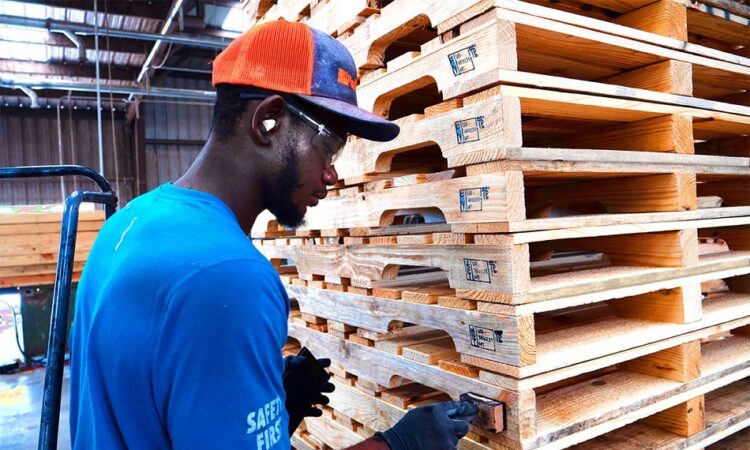
Are you ready to dive into the world of heat treated wood pallets? These pallets are more than just your average wooden platforms; they’re crucial for ensuring your products travel safely across the globe. Let’s explore the ins and outs of these pallets – from their purpose and international standards to the different types and sizes available. It’s a journey into the heart of global trade and transport.
What are Heat Treated Wood Crates and Why are They Used?
Let’s start with the basics. Heat treated wood crates, or pallets, are essentially wooden platforms that have been heated to eliminate any harmful organisms living in the wood. This process is crucial in the shipping industry, especially for international transport. It’s all about keeping those pesky pests and diseases that could be hiding in the wood from spreading to new areas. Think about it – no one wants to be responsible for introducing an invasive species to a new environment. That could cause a lot of environmental and economic damage. Plus, using these treated pallets means your goods are less likely to be held up or rejected at customs, ensuring a smoother journey to their destination.
International Standards for Phytosanitary Measures (ISPM-15) for Wood Packaging Materials
Now, onto ISPM-15. This stands for the International Standards for Phytosanitary Measures No. 15. It’s like the global rulebook for wood packaging materials used in international trade. These standards specify how wood should be treated before it’s used for shipping goods. The main goal here is to prevent the international transport of diseases and pests that could harm plants and trees in other parts of the world. Compliance with ISPM-15 is not just a recommendation; it’s a requirement for businesses shipping goods internationally. It ensures that everyone is playing by the same rules to protect global ecosystems.
The Different Types of Heat Treated Wood Pallets and Their Features
There’s a whole world of heat treated wood pallets out there, each with its own features and benefits. The most common type you’ll encounter is the stringer pallet. These pallets have three or more parallel pieces of wood (called stringers) that support the top deckboards. They’re pretty versatile and can handle a variety of loads. Then there are block pallets, which use blocks of wood at the corners and several points along the sides to support the load. These tend to be stronger and more durable, making them ideal for heavier loads. Each type of pallet is designed with specific needs in mind, like load capacity, handling requirements, and even the type of equipment used to move them.
The Different Sizes of Heat Treated Wood Pallets and Their Specifications
Picking the right size pallet is crucial for efficient and cost-effective shipping. Pallet sizes can vary based on industry standards and regional preferences. In the United States, the most common pallet size is 48 inches by 40 inches, known as the Grocery Manufacturers Association (GMA) pallet. In Europe, the Euro pallet, measuring 1200 mm by 800 mm, is widely used. There are also other standard sizes used globally, like the ISO pallets, which come in six different dimensions to meet various international shipping needs. Knowing the standard sizes and their specifications in your region and industry is key to ensuring your products fit perfectly and travel safely.
The Benefits and Advantages of Using Heat Treated Wood Pallets
So, why should you choose heat treated wood pallets? First and foremost, they’re essential for complying with international shipping regulations. But beyond that, these pallets offer numerous benefits. They’re more durable and less prone to problems like mold and wood rot, thanks to the reduced moisture content from the heat treatment process. This means they can be used multiple times, making them a cost-effective and environmentally friendly option. Heat treated pallets are also generally safer to handle, as the treatment process removes potential contaminants and pests. Plus, they have a natural resistance to warping and shrinking, which helps keep your goods secure during transport.
Conclusion
In conclusion, heat treated wood pallets are a vital component in the world of international shipping and trade. Understanding the different types, sizes, and benefits of these pallets is crucial for any business involved in global trade. They ensure that your products are transported safely and in compliance with international standards, while also offering durability and eco-friendliness. So, the next time you’re preparing for an international shipment, remember the importance of choosing the right heat treated wood pallet – it could make all the difference in ensuring a smooth and successful journey for your goods.









